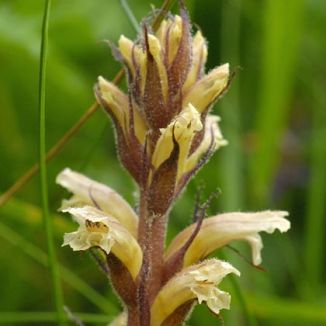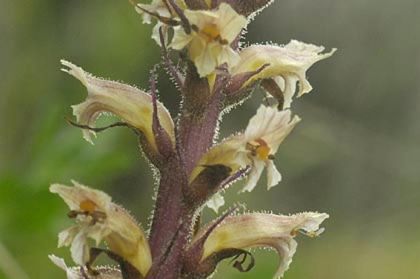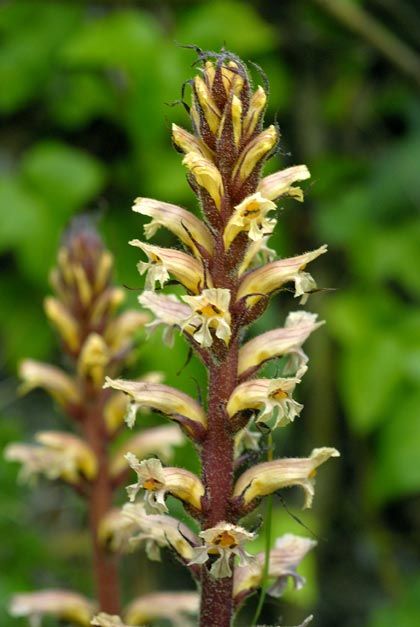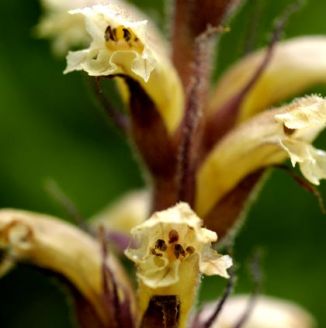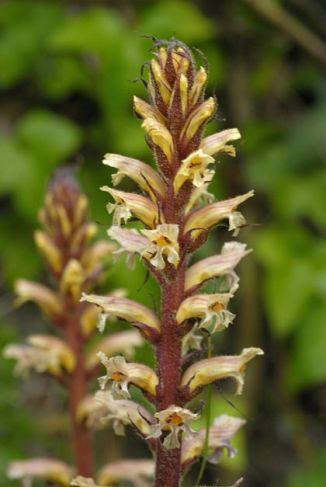Relatively uncommon, this wildflower, like all Broomrapes, is a parasitic plant, mainly living off the roots of other plants. Also it contains no chlorophyll so there is no green pigment, the leaves being replaced by pointed leaf-like little scales which spiral up the stems. Ivy Broomrape lives on the roots of Common Ivy. It is an upright plant with a slender purplish stem up to about 40cm high. The tubular flowers (10-20mm long) are cream with purple veins, and bloom from May to July. This is a native plant belonging to the family Orobancheae.
I first saw this plant at Killiney, Co Dublin in 2008, growing on Ivy – a fact which helped the identification – and my husband photographed it for me, gallantly climbing over a fence to do so. Interestingly enough, this plant was recorded between 1893-1902 by Nathaniel Colgan in his Flora of the County Dublin (1904) and one of the locations given at that time was a 'drift bank by the sea below Killiney Hill'.
If you are satisfied you have correctly identified this plant, please submit your sighting to the National Biodiversity Data Centre
